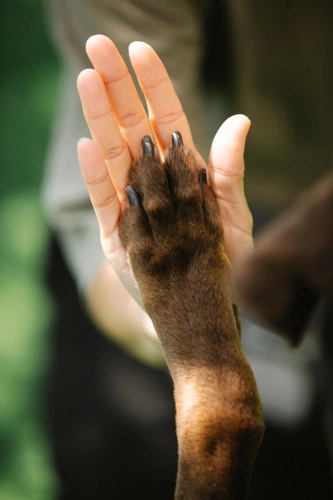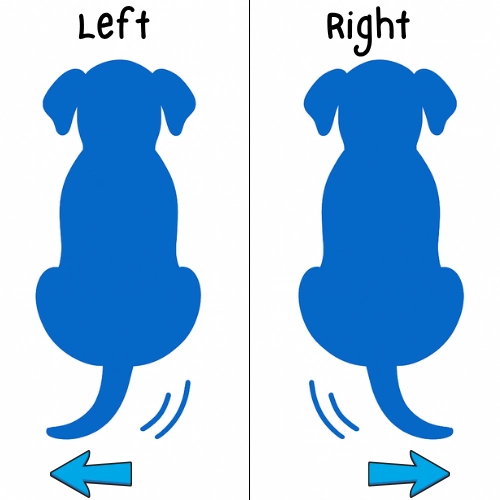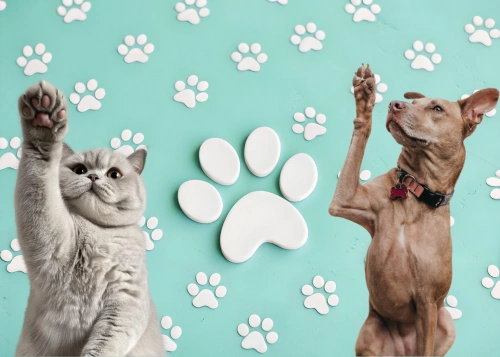Key Takeaways
Most pets show a paw preference. Cats and dogs often favor one paw over the other, much like humans have a dominant hand.
Paw preference is individual. There’s no consistent right-pawed trend across the species like with humans.
Sex matters in cats. Female cats tend to favor their right paw, while male cats prefer their left.
Ambilateral pets may be more sensitive. Dogs without a strong paw preference often show more fear, anxiety, and emotional reactivity. Cats without a strong paw preference often show more aggression and less affection.
Stress can shift paw use. Sudden changes in paw preference may signal chronic or acute stress and emotional strain.
Stronger paw preference means stronger confidence. Pets with a clear dominant paw are often more emotionally stable and better at problem-solving.
Tail wagging direction reflects mood. Right-sided wags signal excitement or happiness, while left-sided wags may indicate caution or stress.
Knowing your pet’s pawedness improves care. Understanding lateralized behavior can help with training, wellness, and deepening the human-animal bond.
What if your pet’s personality was hiding in plain sight: in their paw preference?
For over 70 years, researchers have explored a fascinating question: Do animals like cats and dogs favor one paw over the other, just like humans have a dominant hand? As it turns out, the answer isn’t just “yes or no.” It’s an entire field of study that ties together brain science, emotions, behavior, and even stress.
This small but telling trait connects to complex topics like emotional processing, personality, stress levels, and even how pets relate to their humans. And while it may not be as obvious as tail wagging or purring, your pet’s dominant paw may hold powerful insights into their mind and mood.
In this blog, we’re diving into the science of pawedness, what it means for your pet’s wellbeing, and how understanding how this could help you better care for them.
Do Cats and Dogs Show a Dominant Paw?

Yes, they do! Research shows that most cats and dogs have a preferred paw, just like most humans have a dominant hand. A 2019 meta-analysis found 78% of cats and 68% of dogs show some form of pawedness. This means they consistently favor either their left or right paw in tasks.
About 90% of humans are right-handed, but cats and dogs show no strong population-wide paw preference. Only a small percentage (22% of cats and 32% of dogs) are “ambilateral” (i.e., using both paws equally). This means that paw preference in pets is more about individual personality than species-wide behavior.
Sex Differences in Paw Preference in Cats and Dogs
In cats, the story gets even more interesting. Female cats tend to favor their right paw, while males prefer their left paw. Many studies show this sex-based difference in paw preference. A comprehensive meta-analysis confirmed this pattern.
Dogs, however, are a bit trickier. Some studies suggest similar sex-based trends, but the data isn’t as consistent or robust. While a few studies found female dogs had right-paw preferences and males left, the overall evidence is less conclusive. The most thorough meta-analysis found no reliable sex-based paw preference in dogs. Small sample sizes in studies may explain this lack of evidence.
Paw Preference and Personality: What the Dominant Paw May Reveal
Here’s where things get exciting, and even useful for pet owners. The dominant paw your pet uses could provide clues about their personality traits, behavioral tendencies, and even their emotional resilience.
Scientists have extensively studied how paw preference relates to personality in dogs:
Left-pawed dogs are more likely to show negative cognitive bias, a pessimistic outlook, greater sensitivity to stress, and stronger fear responses than right-pawed dogs.
Right-pawed dogs, in contrast, have performed better in guide dog training, suggesting a link between right paw use and calmer, more confident behavior.
Ambilateral dogs (those without a strong paw preference) show higher reactivity to stress, more intense responses to noise, and greater fearfulness. In fact, a shift toward ambilaterality has been observed in dogs experiencing chronic or acute stress, meaning losing a clear paw preference can be a sign of emotional struggle.
In cats, similar emotional patterns appear. Ambilateral cats have been found to be more aggressive, less affectionate, and less successful in problem-solving tasks compared to cats with a clear left or right preference. Those with a defined paw preference tend to be seen as more confident, active, friendly, and affectionate.
How Paw Preference Relates to Stress and Emotional Health
Understanding pawedness in pets doesn’t just help us learn about who they are: it might help us understand how they feel.
Studies show that non-lateralized pets, or those without a dominant paw, tend to be more emotionally reactive. These pets may be more susceptible to anxiety, stress, and fear-based behaviors. One reason could be tied to brain asymmetry: animals with stronger lateralization may process emotional information more efficiently, leading to greater emotional control.
Even more fascinating, stress can change paw preference. Dogs subjected to acute stress, like loud noises or unfamiliar environments, sometimes switch from a clear paw preference to ambilateral behavior. This might be due to activation of the right hemisphere of the brain, which is involved in processing fear and negative emotions. In this sense, sudden changes in paw use may be an early indicator of stress in your pet.
Beyond Paws: Tail Wagging and Other Signs of Asymmetry

Paw use isn’t the only clue to your pet’s emotional world. Dogs, in particular, display asymmetric tail wagging based on how they feel.
Right-sided tail wagging (controlled by the left brain hemisphere) occurs more when dogs are happy or excited, such as when greeting their owner.
Left-sided wagging (right brain activation) is more common when dogs face unfamiliar dogs or threatening situations.
This aligns with the valence hypothesis, which suggests the left brain is associated with approach behaviors and positive emotion, while the right brain handles fear, withdrawal, and vigilance.
These asymmetries, whether expressed through paws, tails, or even head and body turns, reveal an internal emotional map we can learn to read.
Practical Applications of Understanding Paw Preference in Pets
This may all sound fascinating, but does it matter in day-to-day pet care?
Absolutely.
Understanding paw preference and laterality in pets can lead to better outcomes in multiple areas:
Welfare Monitoring: A sudden loss of paw preference may be a subtle red flag for stress or anxiety.
Behavior Training: Pets with strong lateralization may respond more consistently to training routines or perform better in service roles.
Personality Matching: Ambilateral pets may be more sensitive or reactive and might thrive best with calm, patient owners.
Veterinary Care: Recognizing asymmetries in behavior may aid in diagnosing neurological or emotional conditions.
Enrichment and Play: Knowing your pet’s preferred paw can help you better design interactive play and cognitive tasks.
Final Thoughts on Paw Preference in Cats and Dogs
The idea that your pet has a “dominant side” might sound cute, but it’s rooted in deep, complex neuroscience that connects to emotion, cognition, and wellbeing.
At Burnell Pets, we believe that caring for animals means understanding them, not just at face value, but through science, observation, and respect. By paying attention to subtle cues like paw preference, tail wag direction, or how a pet approaches a new toy, we open the door to a richer, more empathetic relationship with the animals in our lives.
Whether you’re a pet parent, a trainer, or simply someone who loves animals, keep this in mind: sometimes the tiniest paws tell the biggest stories.
Want more behavior-based pet science?
Stick with Burnell Pets as we explore the science behind pet behavior and the surprising signals our animals give us every day.
